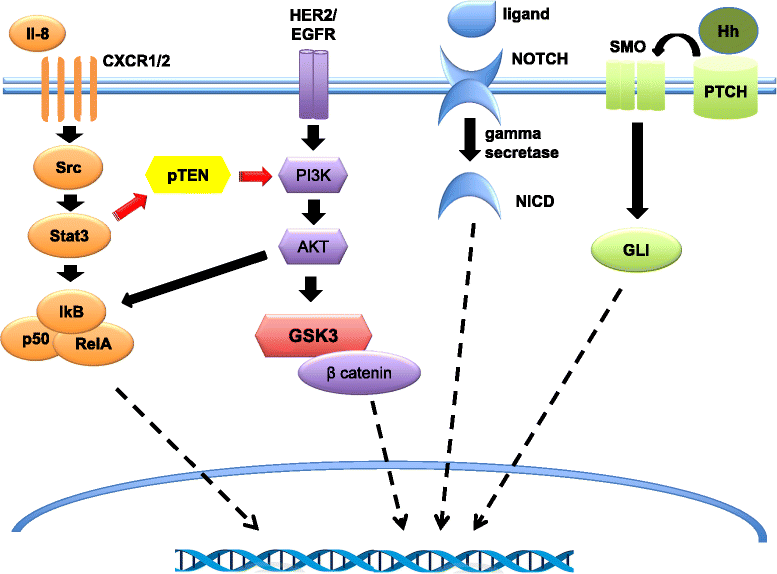Molecular characterization and targeted therapeutic approaches in breast cancer
- PMID: 25902832
- PMCID: PMC4407294
- DOI: 10.1186/s13058-015-0560-9
Molecular characterization and targeted therapeutic approaches in breast cancer
Abstract
Despite the wide improvements in breast cancer (BC) detection and adjuvant treatment, BC is still responsible for approximately 40,000 deaths annually in the United States. Novel biomarkers are fundamental to assist clinicians in BC detection, risk stratification, disease subtyping, prediction of treatment response, and surveillance, allowing a more tailored approach to therapy in both primary and metastatic settings. In primary BC, the development of molecular profiling techniques has added prognostic and predictive information to conventional biomarkers--estrogen receptor, progesterone receptor, and human epidermal growth factor receptor 2. Moreover, the application of next-generation sequencing and reverse-phase protein microarray methods in the metastatic setting holds the promise to further advance toward a personalized management of cancer. The improvement in our understanding on BC biology associated with the study of the genomic aberrations characterizing the most common molecular subtypes allows us to explore new targets for drug development. Finally, the integration of cancer stem cell-targeted therapies and immune therapies in future combination regimens increases our chances to successfully treat a larger proportion of women with more aggressive and resistant metastatic disease. This article reviews the current state of novel biological markers for BC, the evidence to demonstrate their clinical validity and utility, and the implication for therapeutic targeting.
Figures


References
Publication types
MeSH terms
Substances
LinkOut - more resources
Full Text Sources
Other Literature Sources
Medical
Research Materials

